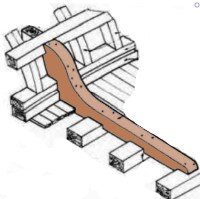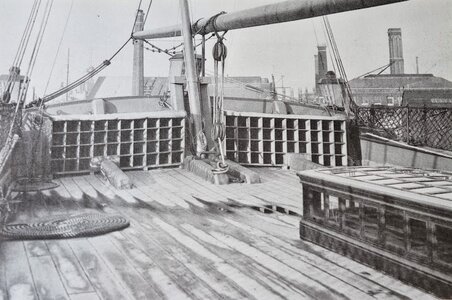- Joined
- Jan 1, 2018
- Messages
- 51
- Points
- 68

Hello All,
From my readings, I have come to believe that the upper part of most transoms were usually supported on the inside (above usually the poop deck) by standards/ inverted knees but after looking at many builds, they seem to be frequently omitted. I have seen a comment that suggests that Continental ships had up to eight transoms (e.g. Chapmans drawings) but British ships had far fewer. Logically, they would have added much to the structural strength of the transom. Were these actually a common feature on ships and if so what time period ?
Any help would be much appreciated.
Pete
Any help would be much appreciated.
Pete





 image) from HMS Victory showing four transoms - two inner ones rising up either side of the ensign staff and two outer ones, each terminating underneath the taffrail. The two white structures either side would most likely be flag lockers ? The standards usually were cut into at least the last three frames.
image) from HMS Victory showing four transoms - two inner ones rising up either side of the ensign staff and two outer ones, each terminating underneath the taffrail. The two white structures either side would most likely be flag lockers ? The standards usually were cut into at least the last three frames.

